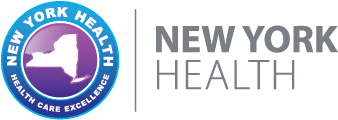Knowing Your Risks for Osteoporosis
Osteoporosis is a condition that causes new bone creation to not keep up with old bone removal. Our bodies constantly absorb and replace bone tissue, so your bones become weak and brittle when this process is disrupted. Symptoms are not always apparent until an injury occurs, so a simple fall or bump could lead to a diagnosis. Though osteoporosis isn’t always quickly spotted, there are many early actions you can take to help reduce your chances and strengthen your bones.
Symptoms of Osteoporosis
When bone loss worsens, some symptoms may occur, such as back pain when a fractured or collapsed vertebra is present, loss of height or stooped posture, or frequent broken bones.
That’s why taking early preventive measures is key.
Uncontrollable Risks for Osteoporosis
Age, sex, and race all play a part in your osteoporosis risk factors. Older white or Asian women are at the highest risk of developing the disease. A small body frame can increase your chances as your bone mass to draw from will be less as you age. If you have a family history, specifically a parent or sibling with osteoporosis, your risk may be higher, too.
Controllable Risks for Osteoporosis
Some controllable risks that might increase your chance of developing osteoporosis include hormone levels, such as reduced estrogen, those with too much thyroid hormone, or other gland issues. If you fall into any of these categories, speak with your doctor on how you can do your part to prevent your chance of bone loss in the future.
Change in Lifestyle and Dietary Choices
Dietary factors such as low calcium or poor eating habits can put you at higher risk, too. Other causes of a higher risk of osteoporosis include:
- Steroid use
- Medications used for cancer, seizures, or gastric reflux
- Medical conditions such as lupus, cancer, kidney or liver disease
Lifestyle choices such as tobacco use, excessive alcohol, and a sedentary lifestyle can all be risk factors for osteoporosis. Still, with a few changes, you can maintain strong and healthy bones.
The right balanced nutrition includes protein, calcium, and maintaining proper body weight.
Routine exercises are another great way to lower your risk at an early age. The earlier you start prevention, the better chance you have of reducing bone loss down the li.

